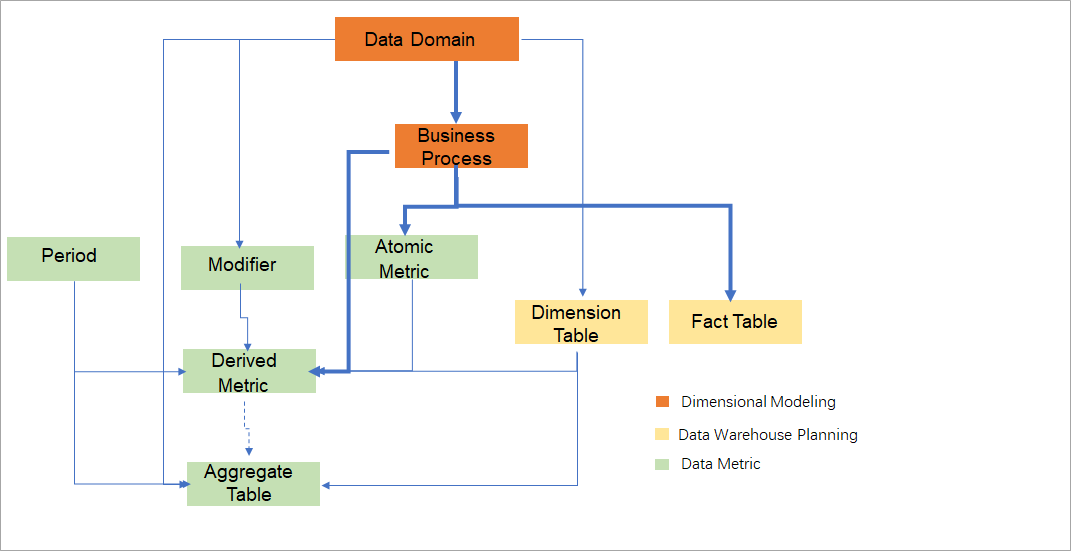A business process refers to a business activity that is performed by an enterprise in a specific data domain. A business process is a logical subject that needs to be analyzed in Data Modeling. For example, a trade data domain can contain business processes such as adding commodities to the shopping cart, placing orders, and paying orders. This topic describes how to create and use a business process.
Prerequisites
A data domain is created. For more information, see Data domain. You can also use the default data domain provided by the system.
Background information
A business process is used to describe the process of a business activity, such as adding commodities to the shopping cart, placing orders, or paying orders. Some typical analysis methods, such as funnel analysis, can be used to analyze business processes and view the business effect. For example, purchases can be divided into the following business processes: browsing commodities, adding commodities to the shopping cart, placing orders, paying orders, and confirming receipt of commodities. You can create a metric named "number of orders" for each of the business processes and use this metric to perform funnel analysis on purchases.
 You can plan and create business processes in a data domain. After you create a business process, you can perform the following operations:
You can plan and create business processes in a data domain. After you create a business process, you can perform the following operations:
Plan and create Atomic metric and Derived metric in the business process.
Associate Create a logical model: fact table with the business process.
Create a business process
By default, DataWorks Data Modeling provides a business process named default. If your business is simple and does not need multiple business processes, you can use the default business process.
If your business is complex, you can create business processes based on your business requirements. To create a business process, perform the following steps:
Go to the Data Layer page.
Log on to the DataWorks console. In the top navigation bar, select the desired region. In the left-side navigation pane, choose . On the page that appears, select the desired workspace from the drop-down list and click Go to Data Modeling.
In the top navigation bar of the Data Modeling page, click Data Warehouse Planning. The Data Layer page appears.
In the top navigation bar of the Data Modeling page, click Data Warehouse Planning. In the left-side navigation pane of the Data Warehouse Planning tab, choose to go to the Business Process page.
Create a business process.
On the Business Process page, click Create Business Process.
In the Create Business Process dialog box, configure the parameters.
Parameter
Description
Abbreviation
The abbreviation for the name of the business process.
The abbreviation can be a maximum of 128 characters in length and can contain lowercase letters, digits, and underscores (_). The abbreviation must start with a lowercase letter.
Name
The name of the business process.
The name can be a maximum of 2,048 characters in length. It can contain letters, digits, underscores (_), and ampersands (&) and must start with a letter or digit.
Display Name
The display name of the business process.
The display name can be a maximum of 2,048 characters in length. It can contain letters, digits, underscores (_), ampersands (&), and parentheses () and must start with a letter or digit.
Data Domain
The data domain to which the business process belongs.
Owner
The owner of the business process. The owner of the default business process is system.
Description
The description of the business process.
The description of the data layer can be a maximum of 2,048 characters in length.
Click OK. The business process is created.
What to do next
After the business process is created, you can perform the following operations:
Plan and create Atomic metric and Derived metric in the business process.
Associate Create a logical model: fact table with the business process.